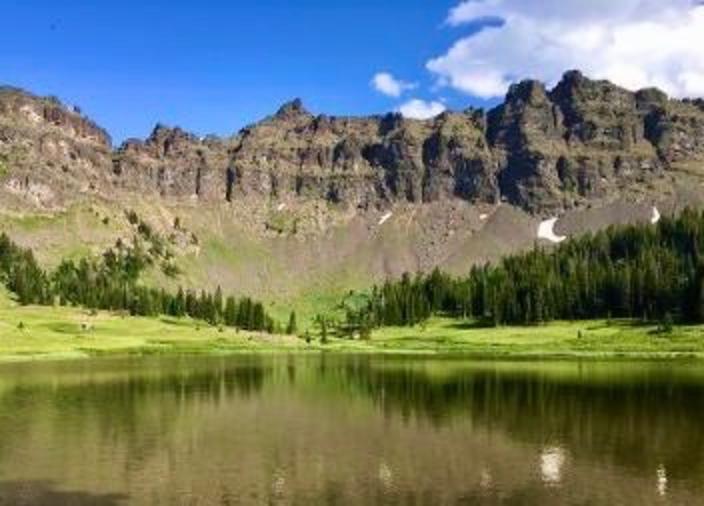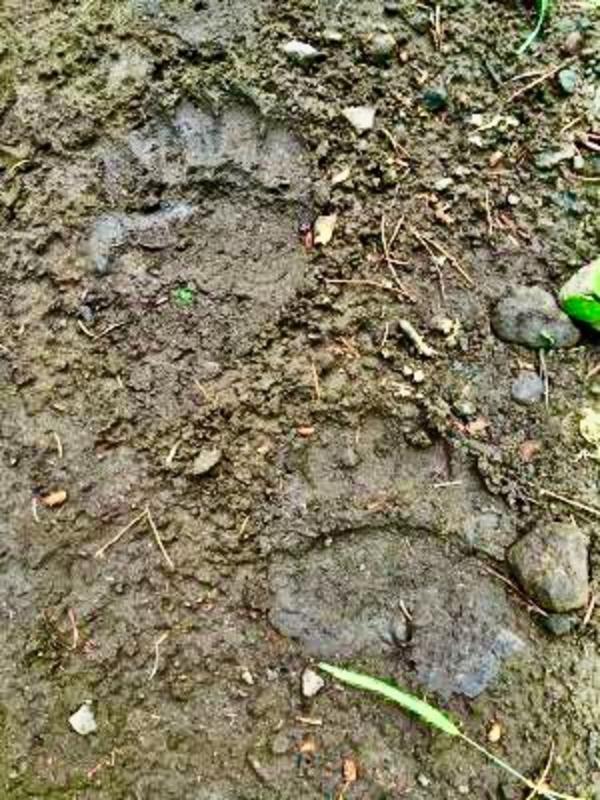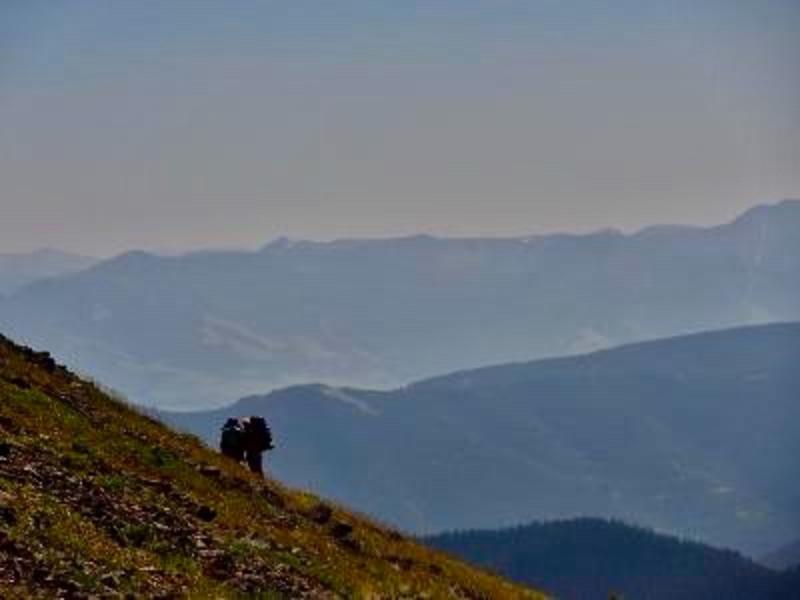Back to StoriesGuest Essay: Why The Gallatin Mountains Need Permanent Protection, Especially Now
I first started working in Yellowstone National Park and tromping around the wild country of Montana a half century ago during the summer of 1968. Then, while stationed at Malmstrom Air Force Base in Great Falls during the early 70s, I had the opportunity to trek through Glacier and the remarkable untamed terrain in and around the Bob Marshall Wilderness, entering from all sides.
I started my seasonal career as an Interpretive Park Ranger in Yellowstone in 1974, and continued my travels through the park backcountry. I soon began to appreciate the wonderful wild buffer zones surrounding Yellowstone. Having worked two summers at Great Smoky Mountains National Park, I realized that not all national parks are so fortunate.
During subsequent years I would explore the designated wilderness areas surrounding Yellowstone: the Absaroka-Beartooth to the north and northeast; the Washakie to the east; the North Absaroka to the east; the Teton Wilderness to the southeast, the Lee Metcalf to the west, and the Winegar Hole to the southwest.
June 5, 2020
Guest Essay: Why The Gallatin Mountains Need Permanent Protection, Especially NowAs a seasonal backcountry ranger-naturalist in adjacent Yellowstone, Orville "Butch" Bach has witnessed change coming to the region for decades—and fewer spots left untouched by people
by Orville "Butch" Bach
I first started working in Yellowstone National Park and tromping around the wild country of Montana a half century ago during the summer of 1968. Then, while stationed at Malmstrom Air Force Base in Great Falls during the early 70s, I had the opportunity to trek through Glacier and the remarkable untamed terrain in and around the Bob Marshall Wilderness, entering from all sides.
During those early years I was aware of the 1964 Wilderness Act, and that I was at times walking through land designated as “wilderness,” but I really didn’t pay much attention to boundaries. That’s because back then almost all travel was by foot or horseback. Occasionally I might see a jeep on an old logging road, but there were no motorcycles, snowmobiles, ATVs, jet skis or mountain bikes where I traveled on public lands.
I started my seasonal career as an Interpretive Park Ranger in Yellowstone in 1974, and continued my travels through the park backcountry. I soon began to appreciate the wonderful wild buffer zones surrounding Yellowstone. Having worked two summers at Great Smoky Mountains National Park, I realized that not all national parks are so fortunate.
During subsequent years I would explore the designated wilderness areas surrounding Yellowstone: the Absaroka-Beartooth to the north and northeast; the Washakie to the east; the North Absaroka to the east; the Teton Wilderness to the southeast, the Lee Metcalf to the west, and the Winegar Hole to the southwest.
For some reason I had failed to explore the Gallatin Range where it extended out of Yellowstone north of the park. I knew that this range had been recommended for wilderness in 1988 by the U.S. Congress with the support of Montana U.S. Senators Max Baucus and John Melcher, and Montana U.S. Rep. Pat Williams. However, President Ronald Reagan vetoed the bill.
I eventually explored portions of the Gallatin Range—climbing Mount Blackmore, and hiking to Windy Pass, but it wasn’t until the summer of 2018, nearing the age of 72, that I backpacked the full range of the Gallatin Crest from Grotto Falls all the way into Yellowstone with my two daughters, my then 13 year-old grandson and friends.
What I experienced along the way truly amazed me.
To begin with, the high mountain scenery, with its snowcapped peaks and flower-laden meadows, matched anything that I have seen along the high line in Glacier from Logan Pass to Brown Pass, the high plateaus of the Beartooth, or any of the high mountain country that I have experienced in and around Yellowstone. As I hiked along the single track trail that meanders along the “Devil’s Backbone,” as it’s called, I was frankly flabbergasted that this region, all of it, including the drainages on both sides providing vital habitat for wildlife, were not protected as wilderness.
Our trip began on a Sunday, so the foot traffic between Grotto Falls and Hyalite Lake was heavy, which made the passing of several dirt bikes with their noise and smoky emissions all the more inappropriate. Above Hyalite Lake we observed the damage done to the resource from dirt bikes traveling in areas of the national forest where they are not allowed. During our seven day trip we did not see a single U.S. Forest Service employee, yet we did see the damage done to fragile wet meadows, and the erosion caused by mechanized users shortcutting trails.
Above Hyalite Lake we observed the damage done to the resource from dirt bikes traveling in areas of the national forest where they are not allowed. During our seven-day trip we did not see a single U.S. Forest Service employee, yet we did see the damage done to fragile wet meadows, and the erosion caused by mechanized users shortcutting trails.
When Congress passed legislation protecting the Gallatin Range in 1988, Bozeman was still just a sleepy college town and Yellowstone was not overcrowded. Thirty years later we now see the growth of Bozeman leading the nation for a town of its size, and the park’s carrying capacity is being stretched to the limit. If ever there was a time to realize that President Reagan made a bad decision in vetoing the highest level of protection for the Gallatin Range, that time is now. And, with the consolidation of public land that happened during the 1990s, the amount of mountains protected by wilderness ought to be as much as possible.
The tremendous growth in visitation to the Gallatins already is causing damage to the resource and to its native wildlife, and perhaps that should be the most important consideration of all. The Gallatin Range provides world class habitat for wildlife, including elk, moose, grizzly and black bears, wolves, and wolverines, just to mention a few of the majestic species that call the Gallatin Range their home. Their habitat is becoming fragmented with migration routes being impacted at critical places.
These mountains are a critical part of the Greater Yellowstone Ecosystem, reputed to be one of the largest of its kind in the temperate life zone on the planet. However, with the growth in our population and visitation, the ecosystem is being threatened by development and a heavy recreational use by various means.
Research has documented that mechanized machines impact the feeding and travel patterns of wildlife far greater than visitors who travel by foot or horseback.
There is a good reason why the 1964 Wilderness Act prohibited machines of all kinds. As I mentioned earlier, fifty years ago when I was trekking around wild country in Montana, machines on the trails were practically nonexistent. However, the technological advances of “adult toys” now allows machines to go practically anywhere, even in steep, mountainous terrain.
I experienced this firsthand a couple of years ago.
Research has documented that mechanized machines impact the feeding and travel patterns of wildlife far greater than visitors who travel by foot or horseback. There is a good reason why the 1964 Wilderness Act prohibited machines of all kinds.
My daughter and son-in-law talked me into a 70 mile bike ride on an old fire road around Mauna Kea on the Big Island of Hawaii. While I enjoy riding a mountain bike, I had never taken such a long ride in one day. Most of the ride would be downhill, but it would still include significant climbs. However, the bikes that we rented were a fairly new breed, called “E-bikes.” The bike had a powerful battery that allowed me to go up hills as though I was floating on a cloud.
While I had a fabulous time biking along that old fire road on my “high-powered” mountain bike, I realized the importance of protecting wild areas from such advances in technology. Certainly, mountain biking represents a great outdoor activity. But like all machines, there are some places where that use is simply not compatible. I would maintain that the fragile high mountains and meadows of the Gallatin Range represent such a place.
[Note from MoJo: Below are two Youtube videos. The first is of mountain biking in the northern Gallatin Range on a descent from 10,154-foot Mt. Blackmore. Fast forward to the two-minute mark where the rider enters the forest. Traveling fast, making little noise, encountering numerous blind turns with little reaction time—it is antithetical, scientists say, to moving safely through grizzly country. And what about impacts to hikers on the trail?
The second video is of motorcyclists riding fast through the Custer-Gallatin National Forest near Big Sky, Montana. The Gallatins are considered vital grizzly habitat and an important place for the bears' ongoing recovery and population health given mounting pressure from human development, rising recreation use and climate change].
I think that my experience of working in Yellowstone and trekking the wild country of Montana for a half century provides me with baseline knowledge of the increased demands that humanity is bringing upon our outdoor recreational resources. I have witnessed so many once pristine areas become rather trampled and over-crowded. Such areas might look okay today to a newcomer, but the damage over the years that I have observed is indeed insidious.
I have witnessed so many once pristine areas become rather trampled and over-crowded. Such areas might look okay today to a newcomer, but the damage over the years that I have observed is indeed insidious.
As our population and visitation continue to grow surely we can recognize the importance of protecting some of the critical remaining wild areas. We need to use some foresight here and attempt to envision what southwest Montana is going to be like a few decades from now. We need to think about what we are going to leave for our grandchildren. We need to respect the wild land and the wild creatures who live here, and not feel entitled to take our machines anywhere we want to.
The great conservationist Aldo Leopold left us with some poignant quotes: “Wilderness cannot grow it can only shrink,” and “What good is it to be young without wild country to be young in,” are two that come to mind regarding the need to protect and preserve the Gallatin Range. Henry David Thoreau compared losing segments of wild country to his ancestors ripping key pages out of a great book, depriving him of the full story.
Unless the gold standard of American land protection— wilderness— is provided to the Gallatin Range and its important wildlife-rich areas, who knows what the future will bring? A new forest supervisor may decide that motorized use throughout the range is just fine. Or a new supervisor may decide that new logging and road building are warranted. Or new technology with super E-bikes with fat tires will be able to go anywhere.
All of this would be to the detriment to the resource, especially its wildlife. Let’s choose not to be so selfish and steal wild country from our wildlife and our grandchildren. Let’s give the Gallatin Range the gold standard of wilderness protection that it almost was granted thirty years ago when Congress voted to protect it. Let’s now finish the job by protecting the Gallatin Range as wilderness to the maximum extent possible.
ALSO READ:
Plus, the three other parts of this Mountain Journal three-part series on wild Gallatins:
‘Unbroken Wilderness:’ The Quest To Save The Wild Gallatins (Part 1)
''Unbroken Wilderness:' Some Call The Porcupine And Buffalo Horn 'Holy Land' (Part 2)
''Unbroken Wilderness:' Some Call The Porcupine And Buffalo Horn 'Holy Land' (Part 2)







